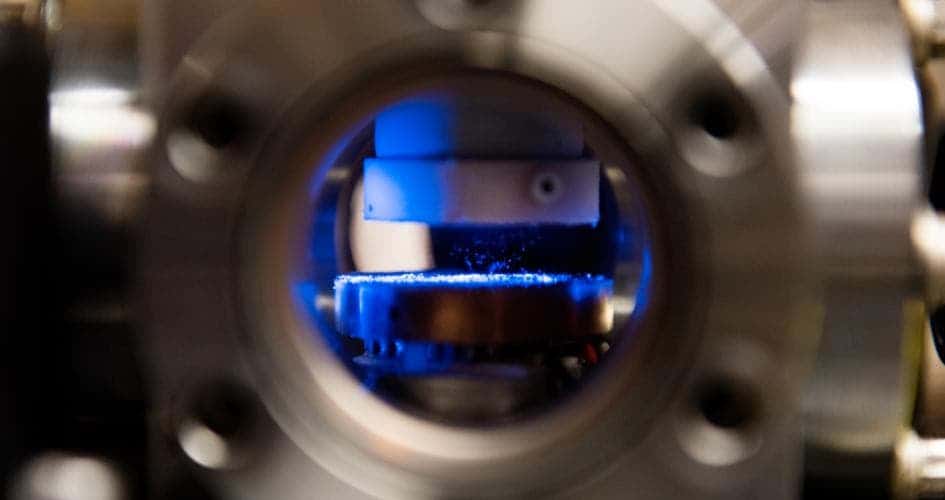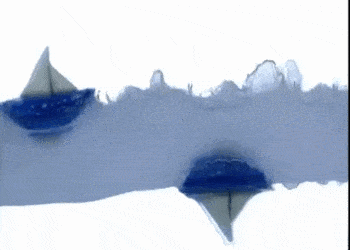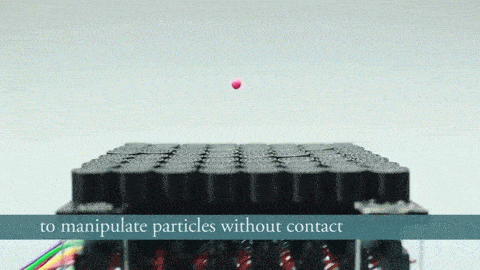
Levitation might seem like the stuff of magic but in the past decade alone, many researchers have shown it can be done by exploiting various physical phenomena. Maglev trains, for instance, literally float on train tracks thanks to powerful electromagnets. Magnets and superconductors can levitate objects thanks to quantum mechanics. You can even use lasers or acoustic waves to make some particles levitate.
Physics of the impossible
These are all very powerful demonstration of science, however, each of these methods only works with certain objects. Now, a novel levitation technique developed at the University of Chicago can lift particles of virtually any nature. The method works by exploiting temperature differences.
“Magnetic levitation only works on magnetic particles, and optical levitation only works on objects that can be polarized by light, but with our first-of-its-kind method, we demonstrate a method to levitate generic objects,” said lead researcher Cheng Chin, a professor of physics.
Various objects, ranging from balls of ceramic to glass to seeds, were placed in a vacuum between two plates. The bottom one is made of copper and has a constant room temperature while the top stainless steel plate is cooled to nearly -300º F (-184º C) by liquid nitrogen. Naturally, the heat gradient moves from the bottom plate, which is warmer, to the top plate. Because the temperature difference is so huge, this variation can sweep particles along the gradient.
“The large temperature gradient leads to a force that balances gravity and results in stable levitation,” says Frankie Fung, lead author of the study. “We managed to quantify the thermophoretic force and found reasonable agreement with what is predicted by theory. This will allow us to explore the possibilities of levitating different types of objects.”
For objects to levitate stably, a delicate balance between many parameters had to be achieved. These include the relative size of the plates, the distance between them or the surface of the bottom plate which needs to be perfectly horizontal otherwise objects float off-center.
“Only within a narrow range of pressure, temperature gradient and plate geometric factors can we reach stable and long levitation,” says Chin. “Different particles also require fine adjustment of the parameters.”
Some of the advantages of thermophoretic levitation over magnetic or optical levitation include a longer duration time (levitation was sustained for up to an hour as opposed to mere minutes) or orientation (levitation was sustained both radially and vertically as opposed to just vertical using other methods).
So far, only particles smaller than 1cm (0.4 in.) in size were levitated using thermophoretic force. The next step is to try it out with larger objects.
Besides being a neat science trick, thermal levitation could help researchers, for instance, study the effects of microgravity on biological organisms without having to send stuff in space. Because no touching is involved, the technique could prove useful for handling hazardous materials which can lead to contamination. And not least, such work is very important for fundamental research as we might learn more about how particles interact and bind.
“It offers new avenues for mass assembly of tiny parts for micro-electro-mechanical systems, for example, and to measure small forces within such systems,” says Thomas Witten, a UChicago professor who wasn’t involved in the study. “Also, it forces us to re-examine how ‘driven gases,’ such as gases driven by heat flow, can differ from ordinary gases. Driven gases hold promise to create new forms of interaction between suspended particles.”
Journal reference: “Stable thermophoretic trapping of generic particles at low pressures,” by Frankie Fung, Mykhaylo Usatyuk, B. J. DeSalvo and Cheng Chin in Applied Physics Letters, Jan. 20, 2017. DOI 10.1063/1.4974489






